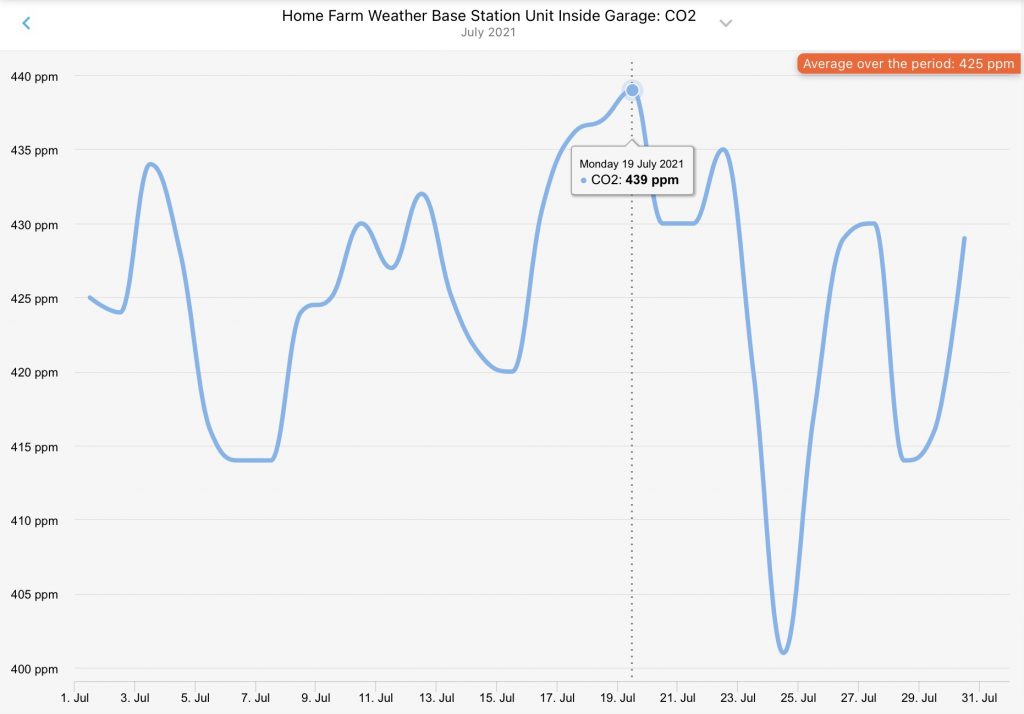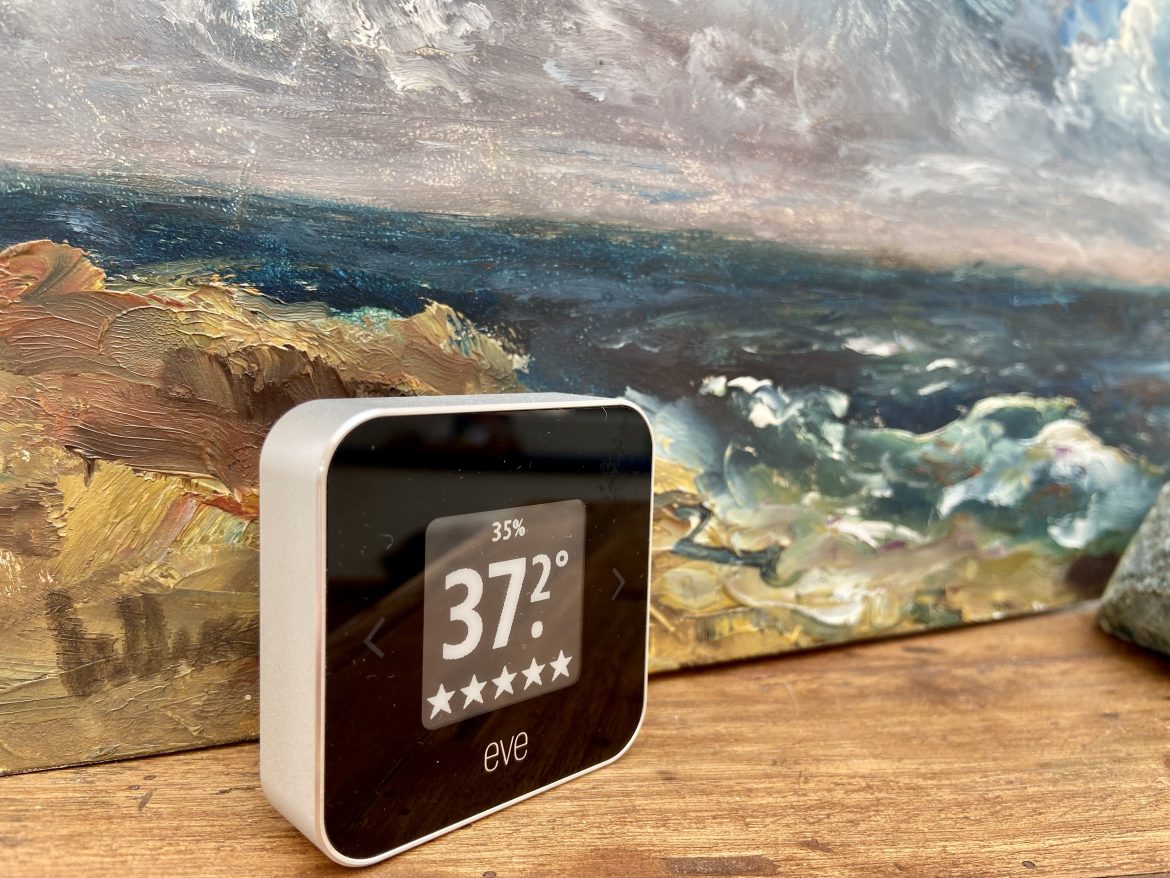We’re approaching three years at Home Farm, and during this time it’s been very interesting to see how the weather patterns have differed from year to year. We’ve been paying particular attention to this because we are taking our gardening seriously, and to be successful we need to know when to plant things and when to protect them from frost.
In just three years, we’ve seen signifiant swings in the variability of the weather. Our Netatmo Home Weather Station, which we installed last summer, has been great in helping us to monitor rainfall, temperatures, pressure, humidity and CO2 levels specifically for where we live.
Let’s start with the heat wave that contributed to July being 3C hotter than in 2020.
We peaked out at a sizzling 32.8C in July during an eight day spell that was incredibly hot, and daytime temperatures throughout the month were warm, with high levels of humidity (72%).
The other interesting thing to note is the prolonged gaps of no rain. All our rain came down in two spells, some 20 days apart, including heavy downpours in early July. Given the roasting temperatures, the 47.4mm we received was very low and the plants, vegetables and trees were taking strain. Even looking around the typically green valley, many of the fields were browning from the scorching heat and lack of rain.


This means that we have to make provision for watering the garden, typically in the early evening, and if you’re growing vegetables, fruit or flowering plants, this means you may be limited in terms of your travels (unless you have an irrigation system, which we don’t).
From an annual perspective, it’s been interesting to see that everything that has been about a month ‘late’ this year, which has prompted our veg garden in particular to get going later. Our average temperature in May was only 10.9C. This needs to be higher in order to let new seedlings and plants establish faster. We were also under the continual threat of frost until June.
The other really interesting thing that we picked up on when going through the data from our personal weather station is the CO2 data. I found it intriguing that our CO2 readings, in a very rural setting, registered 425 ppm as an average and according to the National Oceanic and Atmospheric Administration, global atmospheric carbon is around 419 ppm.

With all the sunny skies, we had a bumper July in terms of solar production. I did think we would have exceeded 900 kWh, but the 823.08 kWh is still an ample amount to keep our house running and heating our hot water via the iBoost. Given the length of days and height of the sun in the sky it’s worth mentioning that we were still some way off our record 986.65 kWh that we generated in May 2020.
On that note, we will continue to monitor our weather to see if any trends emerge and we will be keen to see how August unfolds and how the second heat wave that’s been forecast will compare to July’s.
We’re also hopeful that warmer temperatures extend into late September so that we can maximise our vegetable harvests. The same things apply to Kirsten’s cut flower, especially her dahlias.
